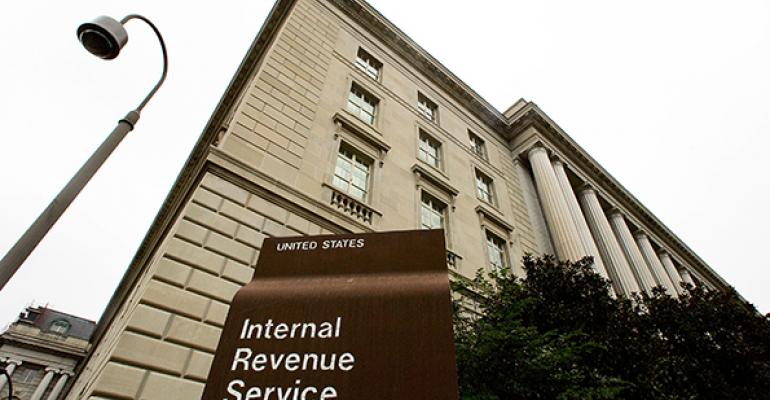The Internal Revenue Service has issued new regulations on determining basis interest in charitable remainder trusts (CRTs), which took effect on Aug. 12. To understand the new regulations, it's necessary to understand the tax shelter scheme at which they’re aimed. To understand this, let’s wind the clock back to, say, 2005.
In 2005, Larry sets up a charitable remainder annuity trust (CRAT) using stock worth $100,000 in which Larry has a zero basis. Larry could have sold the stock for $100,000, but he didn't want to pay tax on a $100,000 capital gain, which might have left Larry with only about $75,000—$80,000 after state and federal taxes.
The CRAT provides Larry with the highest possible payout rate, so that the initial value of his annuity interest in the trust is just shy of $90,000. The charitable remainder interest in the trust is accordingly just a little more than $10,000. So far, so good.
The CRAT trustee immediately sells the stock for $100,000, realizing a $100,000 gain. The CRAT is exempt from tax on this gain. The trustee then buys another investment for $100,000. The CRAT has a $100,000 basis in the new investment. Again, so far, so good.
A little while later, something unusual happens. Larry and the CRAT remainder beneficiary simultaneously sell their interests in the CRAT to THIRD PERSON (TP) for fair market value. Because TP acquires all the interests in the CRAT, a merger occurs, and the CRAT terminates. To keep things simple, let's assume TP pays Larry $90,000 and pays the charitable remainder beneficiary $10,000.
Larry has just hit a home run for tax purposes. Why? Because although his annuity interest in the CRAT generally had a zero basis for determining gain on sale of the interest, the fact that Larry and the remainder beneficiary simultaneously sold their interests in the CRAT allows Larry to claim a proportionate share (90 percent) of the CRAT's basis in the new investment for the CRAT interest he sells.1 Meaning that Larry receives $90,000 from TP in exchange for his annuity interest, which is assigned a $90,000 basis; and presto mundo, Larry walks off with $90,000 free and clear, no capital gain tax. He's made perhaps a $10,000 - $15,000 “profit” relative to selling his stock. Heck, Larry doesn't need an ounce of charitable motivation. That's 2005.
Effect of New Regs
Fast forward to August 2015 and the new IRS regs. If Larry replicates his scheme today, things aren't going to work so well for him. That's because the new regs require Larry to reduce the $90,000 basis for his annuity interest (but not below zero) by his proportionate share of: (1) the CRAT’s undistributed ordinary income, and (2) the CRAT’s undistributed net capital gain. If, for example, on the date of the simultaneous sale the CRAT has $0 of undistributed ordinary income and $100,000 of undistributed gain, Larry’s basis in the annuity interest he sells will be $90,000— $90,000 (90 percent of the undistributed gain), or zero. And poor Larry accordingly will realize a $90,000 gain on the sale of his annuity interest to TP for $90,000. Larry better have some charitable motivation and a healthy appetite for paying taxes.2
Note: This article uses the word “proportionate” to describe Larry's share of the CRAT’s basis and undistributed capital gain. The new regs use the term “actuarial share.” Proportionate as used here means actuarial share. If, for example, the payout interest of a CRT has an actuarial present value equal to 0.5743 x the value of the trust corpus, the actuarial share of the payout interest in percentage terms is 57.43 percent.
Endnotes
- See Treasury Regulations Section 1.1001-1(f)(3).
- For the gory details, see Treas. Regs. Section 1.1014-5(c), as amended by T.D. 9729, and Section 1.1014(d), Examples (7) and (8), added by T.D. 9729 (generally applicable to transactions occurring after 1-15-14).





